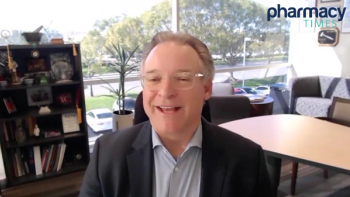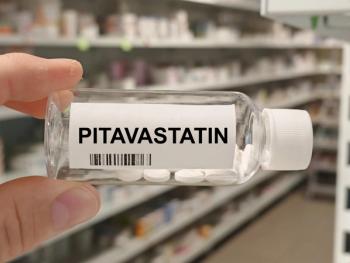
Immunotherapies, PARP Inhibitors Show Promise in Early Stage, Triple-Negative Breast Cancers
Drugs such as pembrolizumab, sacituzumab govitecan, and datopotamab deruxtecan all have growing bodies of evidence illustrating which patients with cancer are most likely to benefit and in which settings.
Triple-negative breast cancer (TNBC) has long presented treatment challenges, but evolving literature and new data show significant promise for this patient population, according to presenter Erika P. Hamilton, MD, in a session at the
Drugs such as pembrolizumab, sacituzumab govitecan (SG), and datopotamab deruxtecan (Dato-DXd) all have growing bodies of evidence illustrating which patients are most likely to benefit and in which settings. For example, the KEYNOTE 355 trial of pembrolizumab in first-line TNBC provided insight into both the setting and metastatic site, as well as how much these considerations matter, according to Hamilton.
In that trial, three-quarters of the patients had programmed death-ligand 1 (PD-L1) expression; however, with a more stringent cutoff of a combined positive score (CPS) of at least 10, that number fell to 35% to 40%. In the intent-to-treat (ITT) population, there was no significant benefit, and this was the same in the CPS cutoff of 1 or greater. However, in those with a CPS score of at least 10, there was a significant benefit in progression-free survival (PFS) with the addition of pembrolizumab. Based on this, the FDA approved pembrolizumab plus chemotherapy for metastatic TNBC with a CPS score of at least 10.
Hamilton noted that immune-mediated adverse events (AEs) are the main reason that this is not indicated in patients with a CPS score of less than 10. These can include hypothyroidism, hyperthyroidism, pneumonitis, colitis, and severe skin reactions, all of which tend to occur in approximately one-quarter of patients receiving pembrolizumab, Hamilton said.
Hamilton noted that the KEYNOTE 355 trial showed no real difference in overall survival (OS) in the ITT group and the patient population with a CPS score of at least 1. However, improvement was seen in those with a CPS score of at least 10, going from 16.1 months to 23 months.
Hamilton did point out, however, that this trial did not include the use of antibody drug conjugates (ADCs).
“I think we really are doing better than this now, but still, triple-negative has the worst prognosis or our three [breast cancer] types,” Hamilton said.
ADCs have significant potential, an example of which is SG. The ASCENT trial investigated SG in the third- and fourth-line settings, which showed a 5.6-month PFS with SG versus 1.7 months with chemotherapy only. In April 2021, Hamilton said the FDA granted regular approval to SG for patients with metastatic PFS who have received 2 or more prior systemic therapies, at least 1 of which was for metastatic disease.
Additionally, OS was increased by up to a year in patients receiving SG in the ASCENT trial, demonstrating an improvement of approximately 6 months. Hamilton said these findings raised questions about whether clinicians should test for Trop2 expression.
“Patients that have high Trop2 [expression] certainly get great benefit from sacituzumab, but even those patients that have low expression—although they don’t do as well—are still outperforming chemotherapy,” Hamilton explained. “And so, this really led to the idea that we don’t need to be testing for Trop2.”
Several upcoming trials are aiming to further the data supporting SG, including the ASCENT-03 trial examining it in the first line setting for metastatic TNBC and the ASCENT-04 trial of SG in addition to immunotherapy in the first-line setting. With these ongoing trials, Hamilton said she anticipates that SG will eventually move into the first-line setting.
Dato-DXd is another promising Trop2-targeting ADC. In the TROPION PanTumor01 study, treatment with Dato-DXd showed encouraging OS data, with an overall response rate of 32% in all patients and 44% in topoisomerase I inhibitor-naïve patients. Additionally, the median duration of response was 16.8 in both treatment arms; the median PFS was 4.4 months in all patients and 7.3 months in topoisomerase I inhibitor-naïve patients; and the median OS was a little over 1 year in both groups.
The BEGONIA trial is also investigating Dato-DXd in addition to durvalumab and has shown impressive tumor shrinkage. Hamilton said 82% of patients were still on treatment at the time of data disclosure, with a follow-up of about 7 months. This treatment also looks quite durable in the first-line setting, and response was seen in both PD-L1 high and PD-L1 low tumors.
Finally, the DAISY trial is examining the efficacy of trastuzumab deruxtecan (T-DXd) in patients with human epidermal growth factor receptor 2 (HER2)-low breast cancer, and particularly those with an immunohistochemistry score of 0 or greater. Response rates are encouraging, with a median PFS of 4.5 months in the hormone receptor (HR)-positive group and 2.1 months in the HR-negative group. Additionally, the trial has seen a median OS of 11.6 months in the treatment arm.
Next, Hamilton discussed developments in early breast cancer. The KEYNOTE 522 study investigated pembrolizumab for this patient population, including a broad population of anyone with at least a 2 cm tumor or any known positivity. Notably, the primary endpoint, pathologic complete response, showed an improvement from 51% to 65%.
“Even for those patients that are node-negative, so they qualify [for the trial] based on the fact that they had a 2 cm tumor or greater, the benefit is almost 6.5%,” Hamilton said. “And so, especially for [TNBC], this really is quite meaningful for us.”
Finally, Hamilton reviewed data around adjuvant olaparib in early TNBC. The OlympiA trial investigated olaparib in early germline BRCA breast cancer, and about 80% of patients in the trial did have TNBC disease, including approximately 70% BRCA1 and 30% BRCA2. With 3.5 years of median follow up, the study found improved OS of approximately 3.4% at the second interim analysis, including a 7.4% benefit with both invasive and distant disease-free survival.
As more studies develop and new data are released, Hamilton said patients with early-stage and TNBC will continue to have improved outcomes. Key studies to watch include the SASCIA and ASCENT-05 trials for SG in residual disease post-neoadjuvant therapy, as well as the TROPION Breast03 trial of Dato-DXd with or without durvalumab for residual disease post-neoadjuvant chemotherapy.
REFERENCE
Hamilton EP. Current Advances: Triple Negative & Locally Advanced Breast Cancer. Presented at: Community Oncology Alliance 2023 Meeting. March 23, 2023.
Newsletter
Stay informed on drug updates, treatment guidelines, and pharmacy practice trends—subscribe to Pharmacy Times for weekly clinical insights.














































































































































































































